As a child who had a deep emotional connection with nature and watched a lot of wildlife documentaries, lions quickly became my favourite animal. They are fascinating for many reasons, one of them being their multifaceted social structure. Each pride comprises several females, their cubs, and a coalition of males. The lionesses work together to hunt and raise their offspring, while the males protect the pride’s territory.
Partnerships of two to four males are more successful at maintaining tenure with a pride than individuals, and they do not take trespassers lightly. They may give chase, or worse, kill them. If a new cohort of males is able to take over a pride, they will kill young cubs sired by their predecessors to further their own bloodlines. The strength and survival of a pride therefore lies in unity and cooperation as they collectively navigate the challenges of the wild.
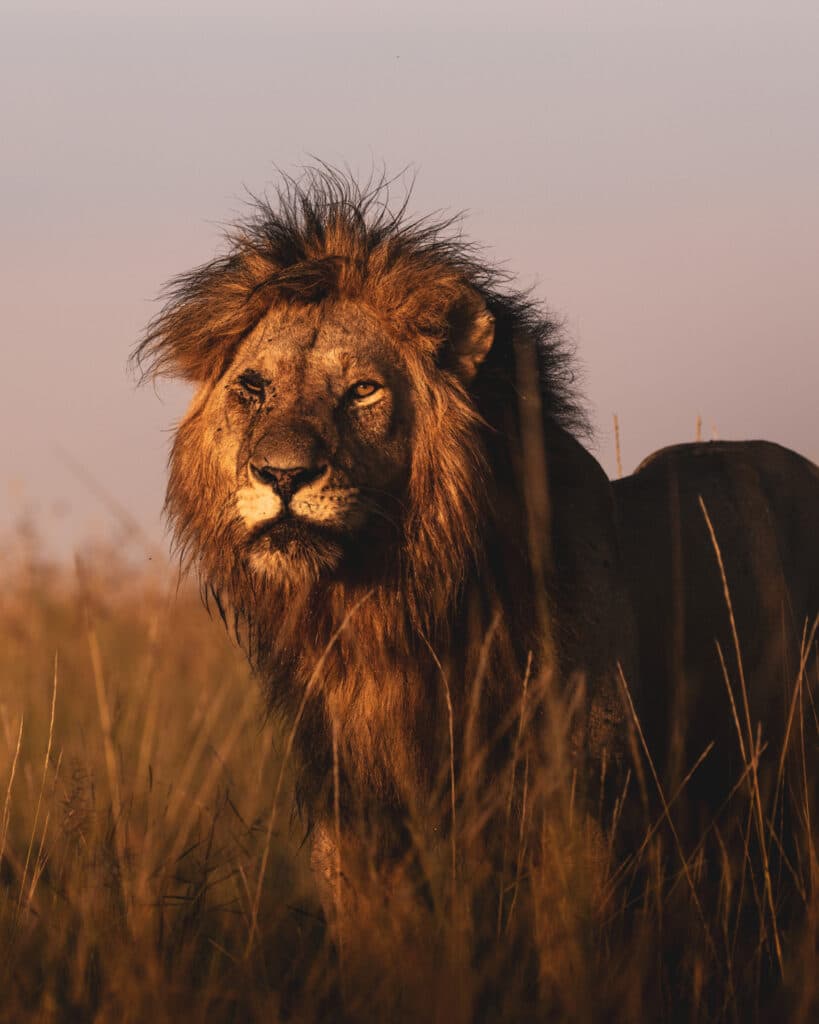
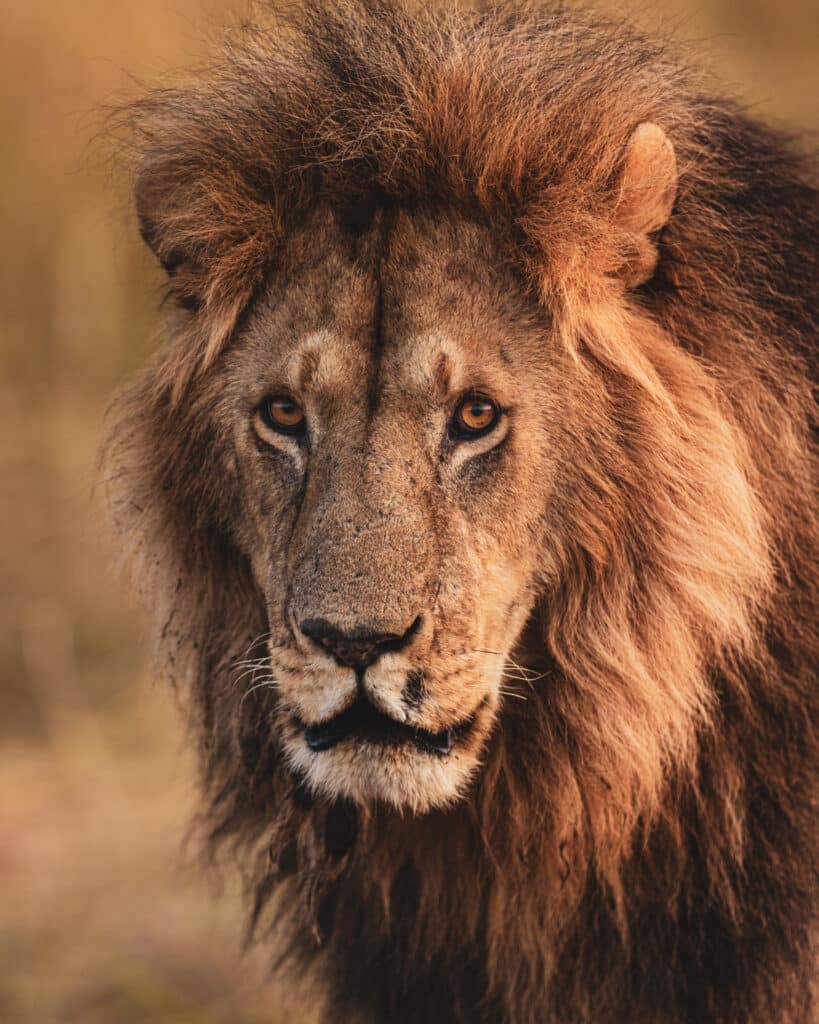
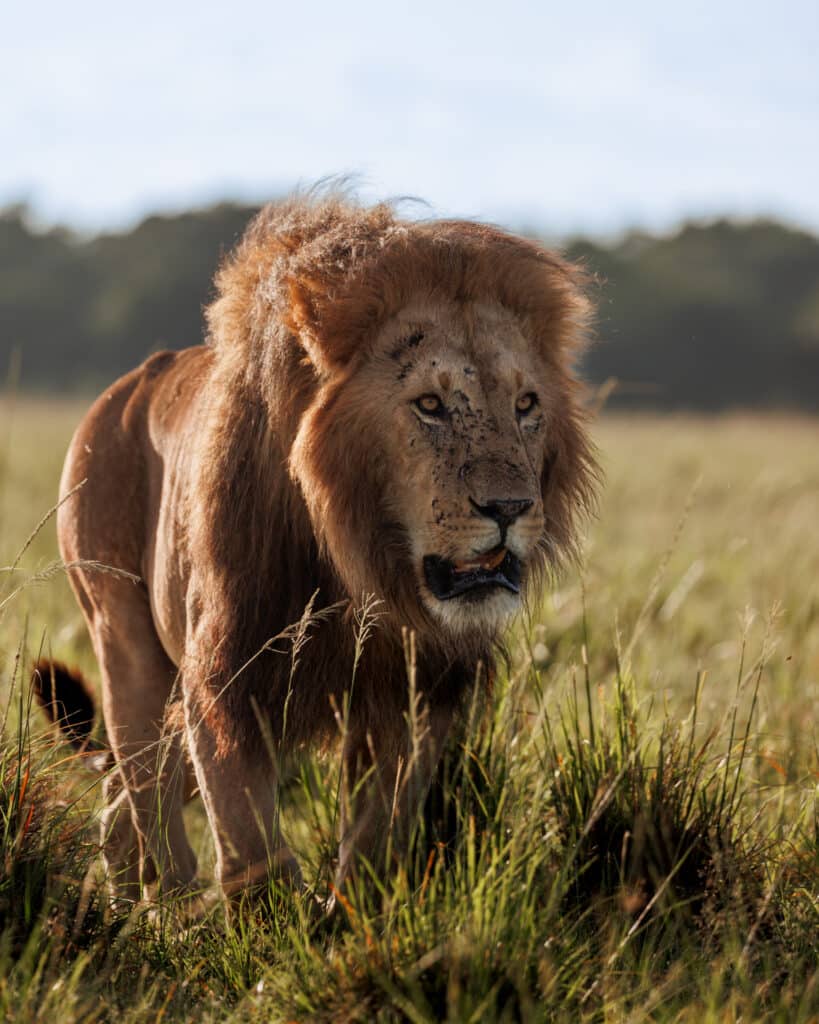
During my first week at Ishara, I was eager to explore the beauty of the Reserve as it was uncharted territory for me. Our Head Guide, Peter, suggested we plan a game drive to an area inhabited by a large pride, and without hesitation I agreed. The next day at dawn, we set off.
We approached a long, narrow hilltop and I asked Peter if it had a name. “Rhino Ridge,” he said, “the Topi Pride was spotted here last evening.” We continued to drive until he brought the car to a sudden halt, pointing to some concealed wheatish figures laying in the grass in the distance. “Lions,” he whispered.
As the sun warmed the morning air, the lions stood up and began walking to find shade. It was like a scene from an award-winning wildlife film; the majestic Topi Pride in the flesh, led by three males (the Salas Boys), nine lionesses, and twelve lively cubs playing in the red oat grass. The spectacle was impossible to ignore as they marched through the open grasslands. To see one or two lions is a treat, to see twenty-four was an astounding and indelible first encounter that set the scene for a year filled with many breathtaking sightings.

With such large prides come plenty of mouths to feed, but their tenacity and experience has kept all their members consistently fed, and watching them hunt has always been a hair-raising experience. They are competent big game hunters and their alertness and resolve are second to none, tracking large herds of buffalo roaming the savanna, patiently waiting to exploit any chinks in the herd’s armour.
One fateful evening, we watched them run over a kilometre toward a large herd of buffalo as they noticed a clan of hyenas targeting a newborn. With purposeful eyes and minds set to kill, nothing could stop them. The chaos created by the ferocious hyenas scattered the herd into smaller groups, isolating around fifteen buffalos and creating the perfect conditions for an epic hunt. The lionesses surrounded this group and began calculating the best angle to approach, occasionally testing them with mock charges. There was an eerie sense of inevitability amidst the grunts and snarls that permeated the atmosphere as we waited in anticipation.

As the back and forth between the lionesses and the buffalo group continued, the commotion caught the attention of the two pride males, Osapuk and Olepolos, who ran to the scene. Olepolos opted to rely solely on brute force and rushed in to tackle a young buffalo. With one strong bite to the back of the neck, he subdued the calf and proceeded to carry it towards his cubs, who hopped onto it and began feeding enthusiastically.
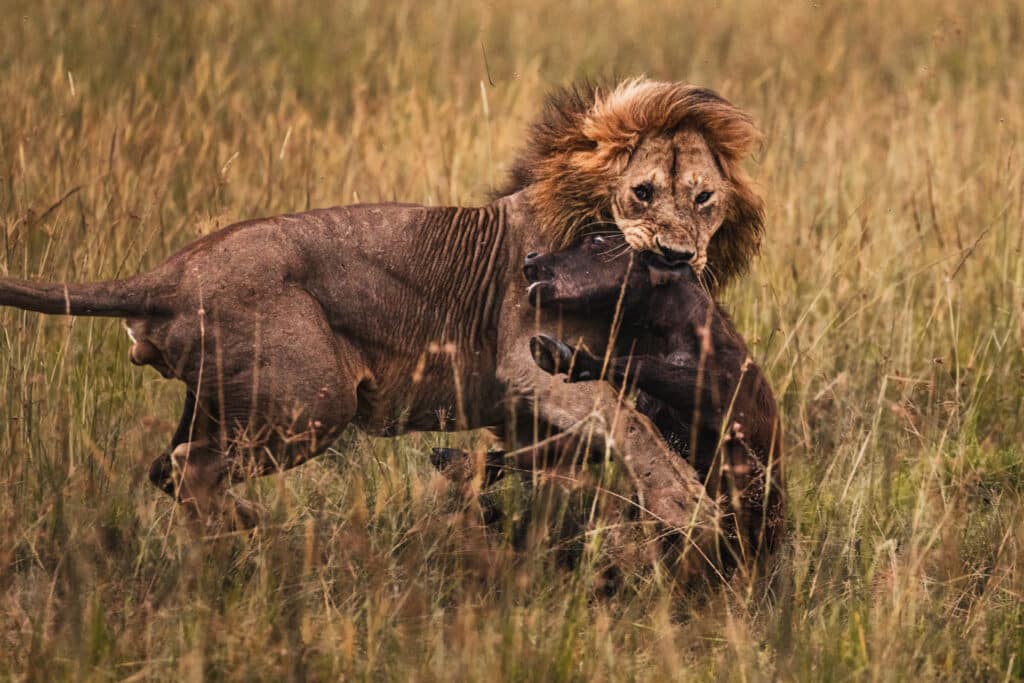
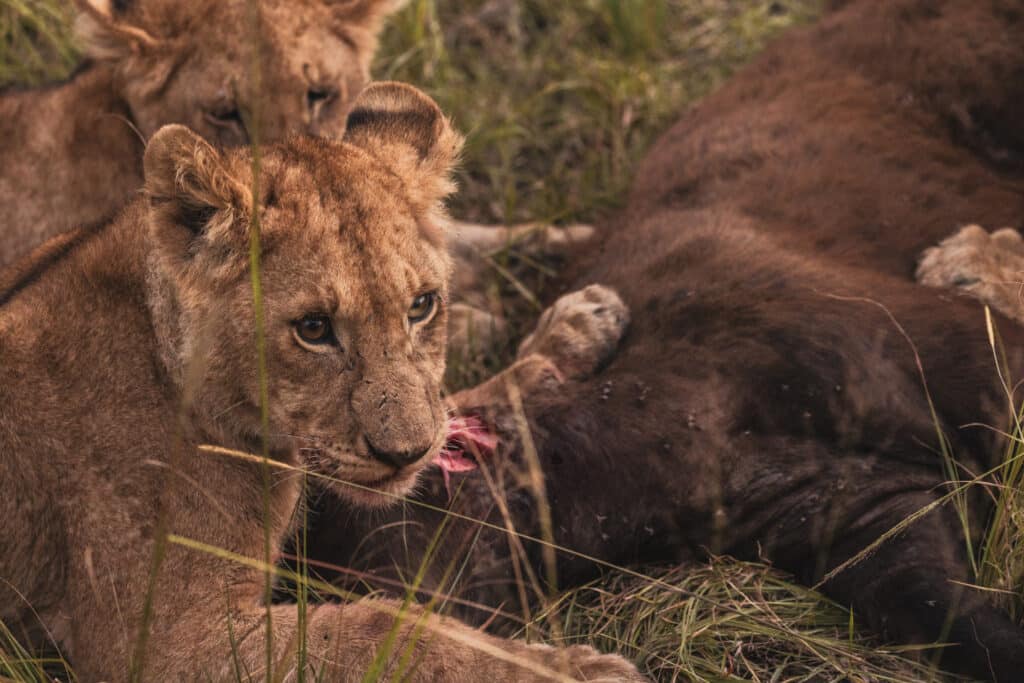
Shortly after delivering the quivering carcass, he charged toward the calf’s mother, leaping straight onto her back. She was violently bucking in an attempt to dislodge him, but his claws were deep into her flesh and he maintained his position. It was like watching a rodeo in the wild. The buffalo eventually weakened, giving the lionesses a chance to catch up and complete the takedown.
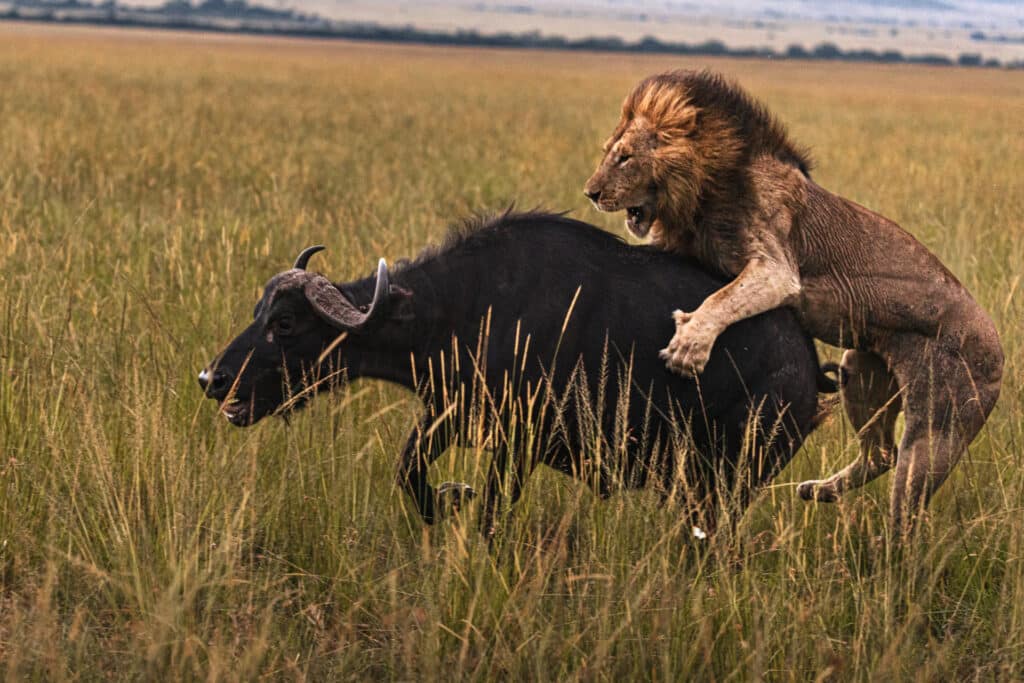
Behind us, another small cohort of lionesses had tackled two more calves, taking the total number of casualties to four. This carnage in the span of just thirty minutes left my hands trembling. Trying to absorb the chaos and photograph it at the same time were next to impossible and it was unlike anything I have ever witnessed; an adrenaline-fueled rollercoaster of emotions. It was a true testament to the collective power of lion prides.
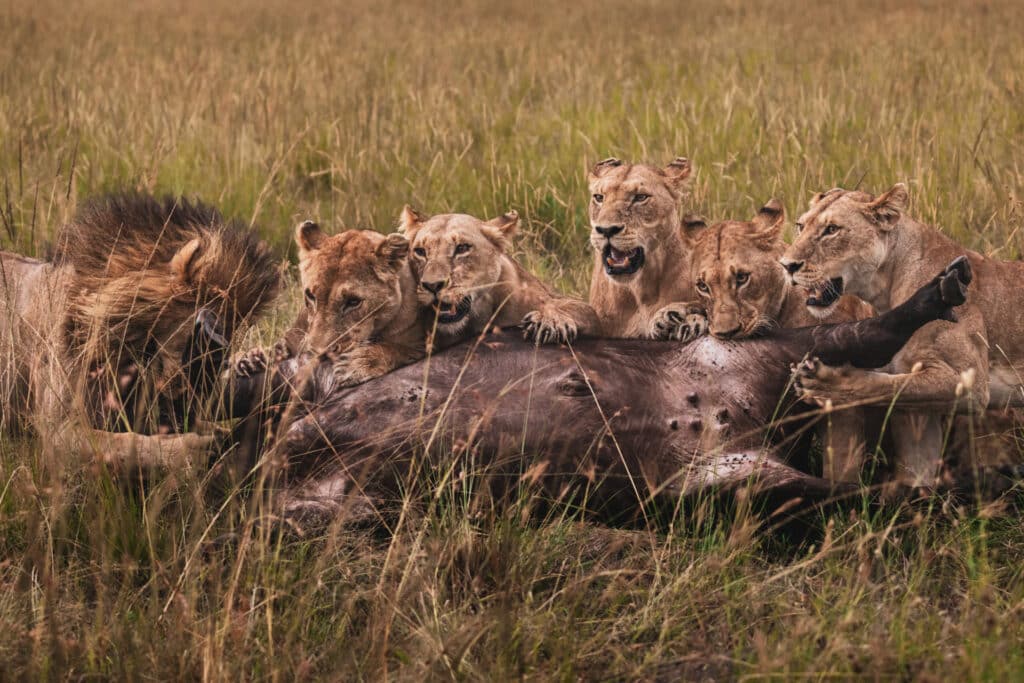
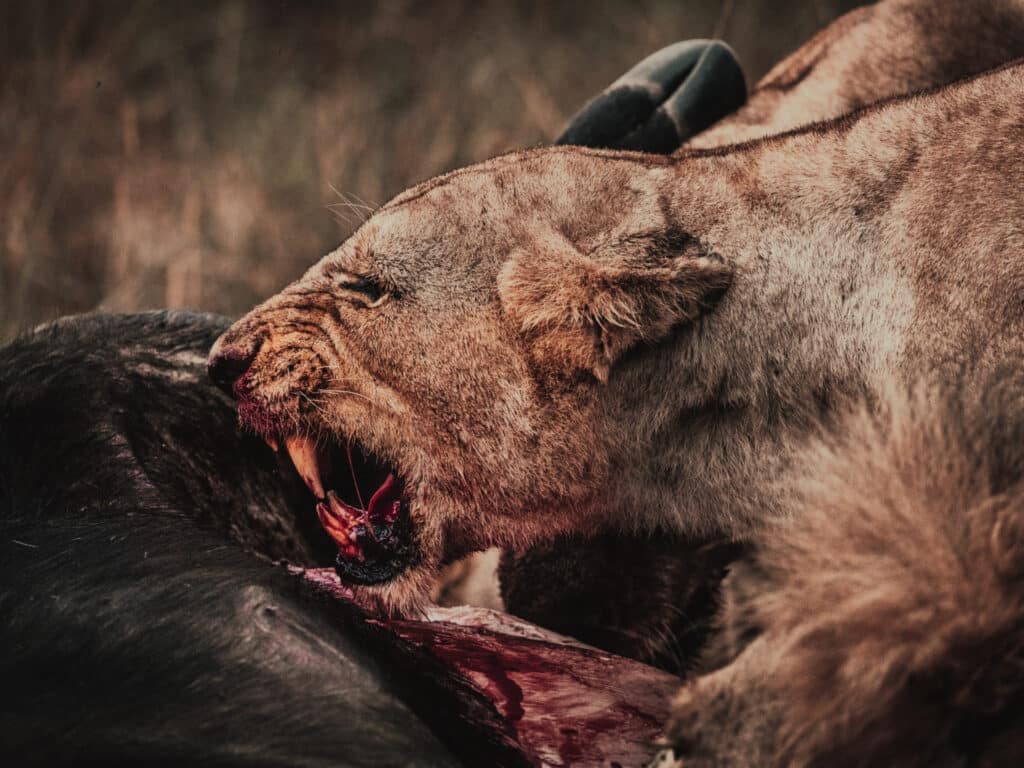
The relationship between lions and buffalo is a fierce and relentless battle for survival, but it is far from one-sided. The buffalo, with their massive bodies and sharp horns, are a formidable adversary. These powerful herbivores will stop at nothing to protect their herd or to kill lion cubs given half the chance. We have witnessed firsthand the dangerous consequences of huge herds maliciously storming through the grasslands, catching the pride off guard, and nearly trampling the vulnerable cubs. The fear and panic instilled by a hundred thundering hooves can make even a pride of twenty-four lions sprint for safety without a second thought.
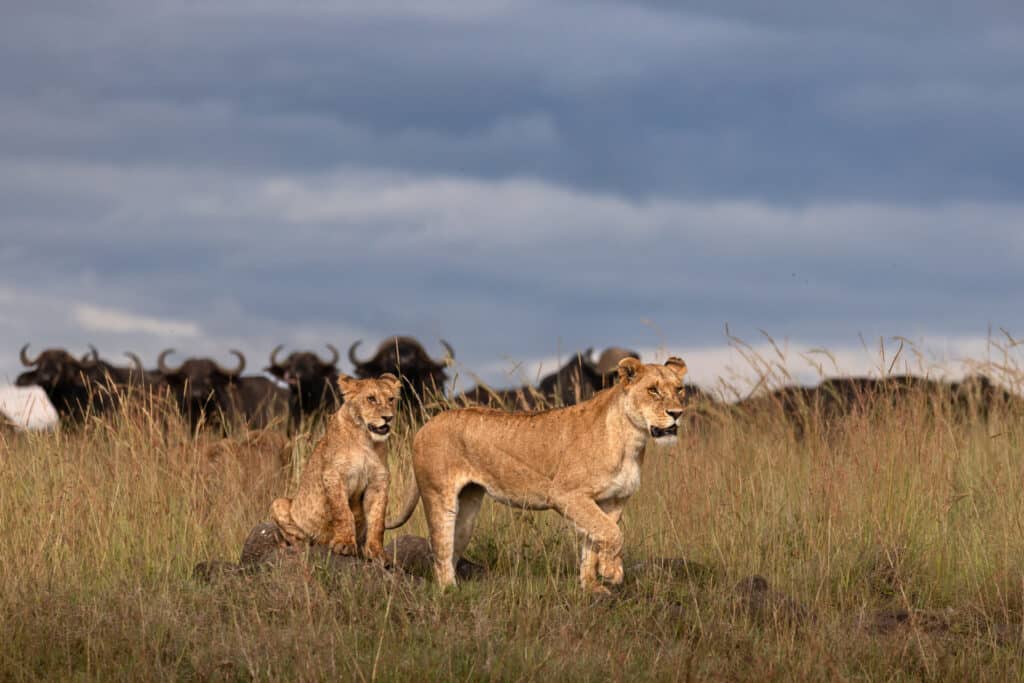
While the Topi Pride has given us dramatic showdowns, they have also displayed a lot of love and playfulness along the way. Dealing with so many cubs can be a handful, but their mothers have cared for them unconditionally, sharing countless whimsical and affectionate moments with them and strengthening their communal bonds.
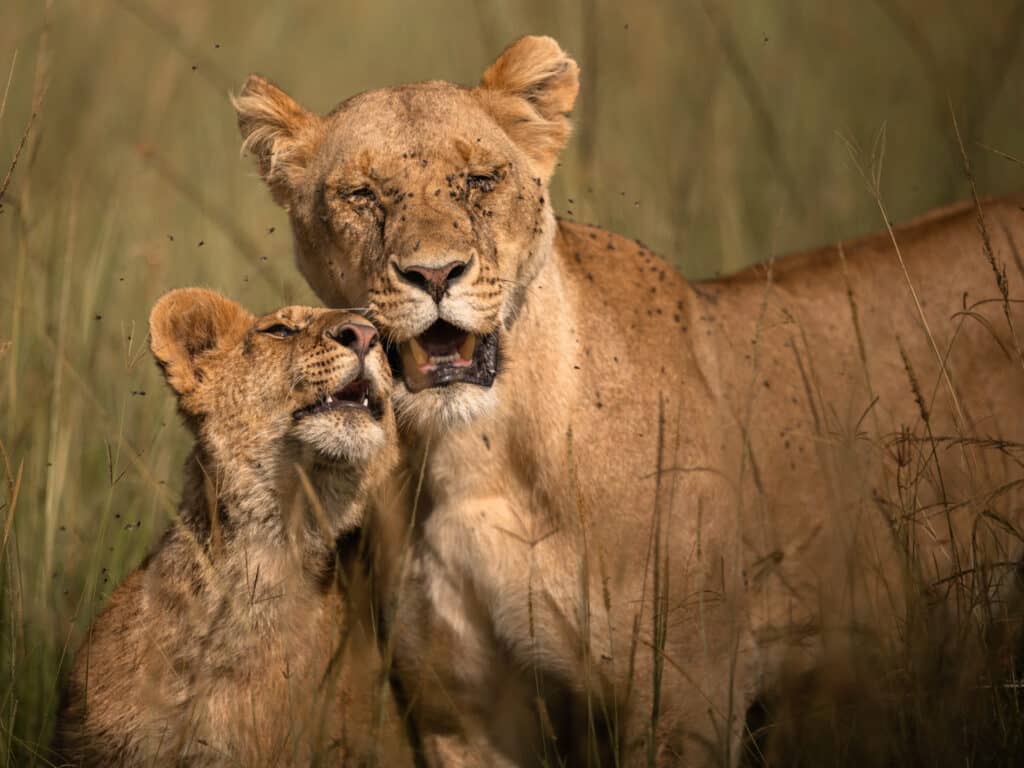
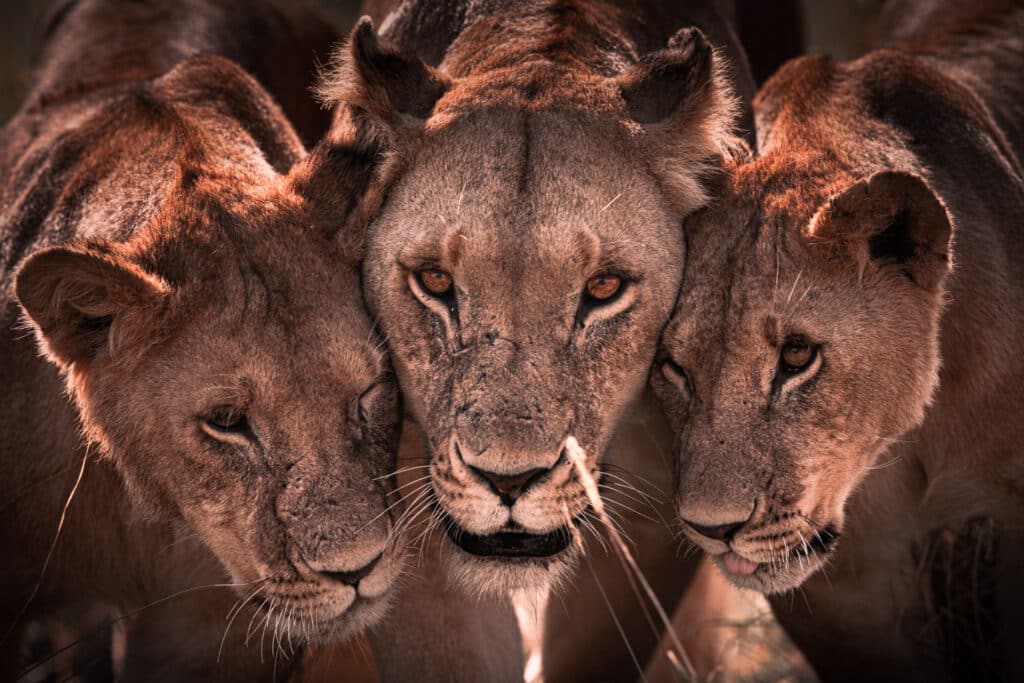
These cubs have always been curious explorers and this has sometimes got them into precarious situations. Many of the lionesses are agile tree climbers, and their not-so-graceful cubs often try to mimic them. While the climb is relatively straightforward, their hooked claws and strong rear legs are not designed for a smooth descent. What goes up must hesitantly come down, and on one occasion we witnessed a stranded cub who had made it to the top finally leaping from the upper reaches of a Boscia tree, gliding for a brief moment like a ballerina before landing into the tall grass below. Unscathed, yet horrified by the ordeal, he proceeded to reacquaint himself with terra firma and seek comfort and reassurance amongst his siblings.

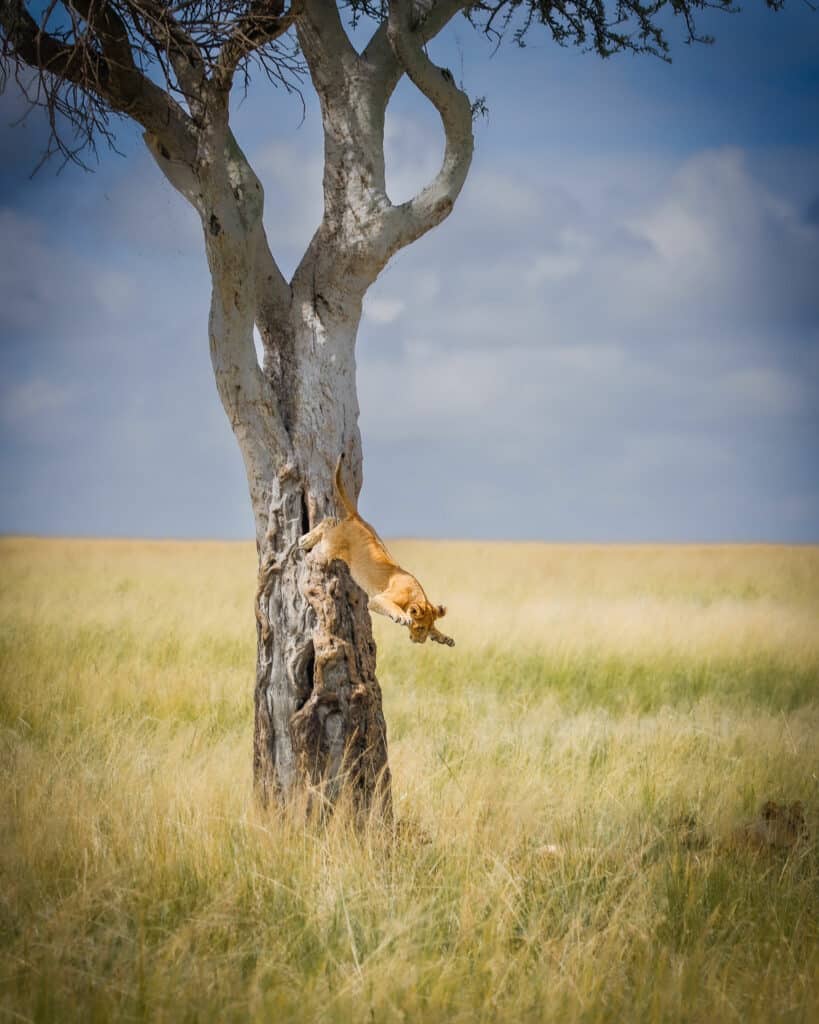
A year down the line, amidst much turmoil and volatility in some of the other prides in the Mara as well as the massacre of icons such as Olope and Olbarikoi, the competent Topi lionesses have surmounted many challenges to protecting their cubs, with the Salas Boys effectively keeping intruders out of their territory and providing the stability necessary for their cubs to reach adulthood. As their confidence and the cubs grow, the Topi Pride is forging its way to becoming one of Africa’s super prides — a juggernaut of lethal force — effortlessly hunting big game almost daily and having even been sighted feasting on elephants recently.
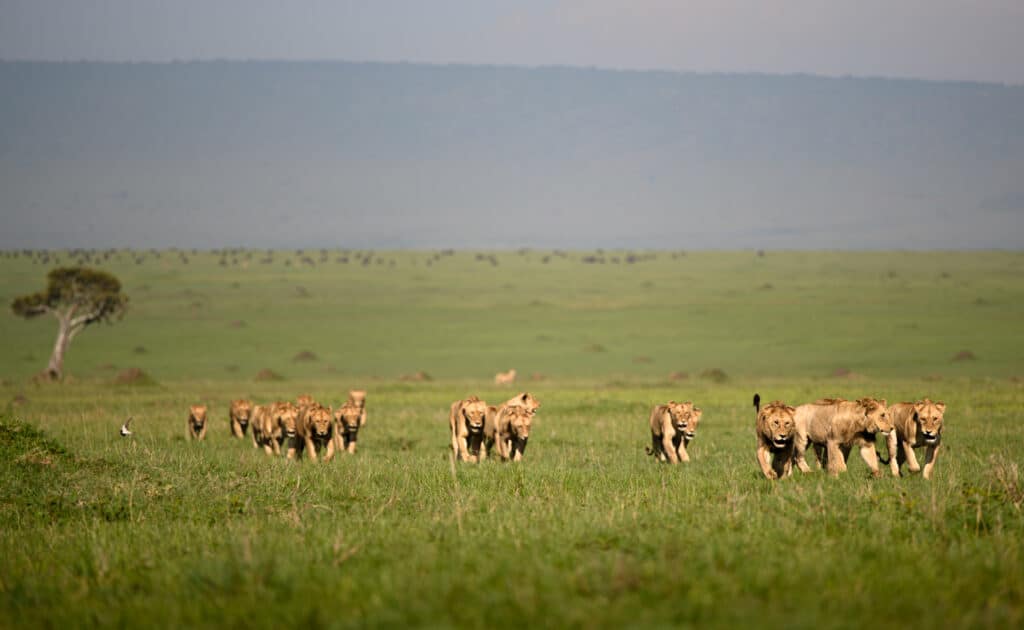
Guided by strong leadership and a wealth of experience, the Topi Pride is on the brink of making history in the Mara. We will be eagerly observing to see what the future entails for this wonderful family of lions.
Photo credits: Eric Averdung, Matthew Huntley, Altaf Jiwa